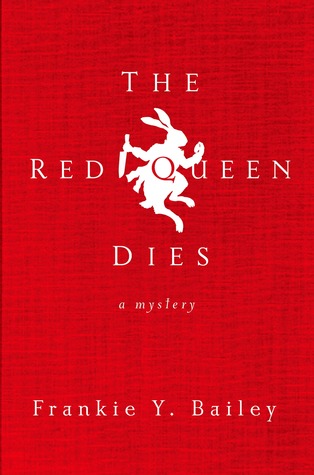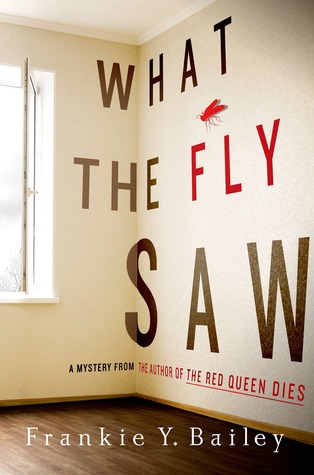From Goodreads: "The plot of the story was fascinating, especially due to the fact that there are so many smaller story lines happening at the same time. [...] The book is fast paced and the mystery behind everything gives it an even greater edge - so the reader will be eagerly reading as fast as they can to see what will happen next and who the killer is. The author threw in lots of unforeseen twists and turns, which is a great addition to the story itself and makes for an altogether deeper plot."
Albany, New York, January 2020 (parallel universe)
A blizzard sweeps up the coast and shuts down the city. When it is over, funeral director Kevin Novak is found dead in the basement of his funeral home. The arrow sticking out of his chest came from his own hunting bow. A loving husband and father and an active member of a local megachurch, Novak had no known enemies. His family and friends say he had been depressed because his best friend died suddenly of a heart attack and Novak blamed himself. But what does his guilt have to do with his death? Maybe nothing, maybe a lot. Three people -- the minister of the megachurch, the psychiatrist who provides counseling to church members, and a medium visiting from the South – say they reached out to Kevin Novak. One of them might know why Novak was murdered. But Detective Hannah McCabe and her partner, Mike Baxter, must sort through lies and evasions as they try to find the killer. The relationship between the partners is threatened as McCabe deals with a political controversy involving her family, unanswered questions about their last high-profile case, and her own guilt because a young woman died after McCabe failed to act.
GUEST POST
The Science behind Every Mystery
by Frankie Y. Bailey
In Salem, Massachusetts in 1692, magistrates presided over the trials of accused witches. The four juvenile girls whose “afflictions” had launched the witch hunt appeared in court displaying signs of satanic torment in the form of convulsions and contorted limbs. Some of the accused confessed and named others, and “spectral evidence” was used to support the charges they made against their neighbors. This evidence was the testimony by the alleged victim that he or she had been visited by the specter of the defendant. Nineteen women and men were convicted of witchcraft and hanged. One elderly man was pressed to death with stones for refusing to submit to trial. From the distance of four centuries, the evidence used in these witchcraft trials, the interrogation of suspects, and the executions seem bizarre and unfathomable. Scholars of the episode tell us that the residents of Salem were dealing with unsettling events such as the loss of the colony’s charter, a congregational schism, and conflict among families. As the structure of their lives was threatened, it was easy to imagine that the Devil was in Salem. There may even be scientific explanations (e.g., ergot poisoning from contaminated grain or Lyme disease) for the symptoms displayed by the afflicted.
 |
| Book#1 |
One of the pioneers of forensic science, Dr. Edmond Locard established a crime lab in 1910. Locard’s exchange principle (“Every contact leaves a trace”) focused the attention of investigators on the use of “trace evidence” (e.g., fibers, hair, soil, pollen) brought into or taken away from a crime scene. In the late 20th century, the O.J. Simpson double murder trial – covered gavel-to-gavel by the media – marked the rise of public interest in the use of forensic science in crime solving. The popularity of TV crime shows, such as CSI and NCSI, has led some observers to discuss the possibility of a “CSI effect” that may lead jurors to expect extensive presentations of forensic evidence during trials. Although some use of forensics has been questioned as “junk science,” DNA analysis has gained credibility both in criminal trials and in obtaining the release of wrongly convicted prisoners.
The science behind mysteries – whether in real life or crime fiction – is used to discover, interpret, and reveal. Today much of that science comes out of the crime lab, but the importance of the work of social scientists, such as psychologists who study false confessions, should not be overlooked. In the future, what we know about the mind and how it functions may be considered the next frontier in crime solving. This last observation is made with a word of caution – even in solving mysteries, it is possible to go a step too far.
Goodreads ** Amazon ** Barnes&Noble
About the author: Frankie Y. Bailey is a mystery writer and a professor in the School of Criminal Justice, University at Albany (SUNY). Her academic research focuses on crime history, popular culture/mass media, and material culture. She has done research and written about topics ranging from local history and women who kill to African American characters in crime and detective fiction. She is currently at work on a book about dress, appearance, and criminal justice. She is the author of two mystery series, featuring crime historian Lizzie Stuart, and Albany police detective Hannah McCabe. Frankie is a past executive vice president of Mystery Writers of America and a past president of Sisters in Crime. A dog lover, she now shares her home with a Maine Coon cat/mix named Harry.
Frankie Y. Bailey is a mystery writer and a professor in the School of Criminal Justice, University at Albany (SUNY). Her academic research focuses on crime history, popular culture/mass media, and material culture. She has done research and written about topics ranging from local history and women who kill to African American characters in crime and detective fiction. She is currently at work on a book about dress, appearance, and criminal justice. She is the author of two mystery series, featuring crime historian Lizzie Stuart, and Albany police detective Hannah McCabe. Frankie is a past executive vice president of Mystery Writers of America and a past president of Sisters in Crime. A dog lover, she now shares her home with a Maine Coon cat/mix named Harry.Author's Giveaway
a Rafflecopter giveaway


What a fascinating guest post! It's always interesting to get the backstory to any story, but most especially (at least for me!) a mystery or crime novel.
ReplyDeleteThanks for inviting me to do a guest post.
ReplyDelete@Frankie Bailey, @Lance - It's a good article indeed. The mix of information and entertaining elements is a great one in order to rise the interest of a blog visitor.
ReplyDelete